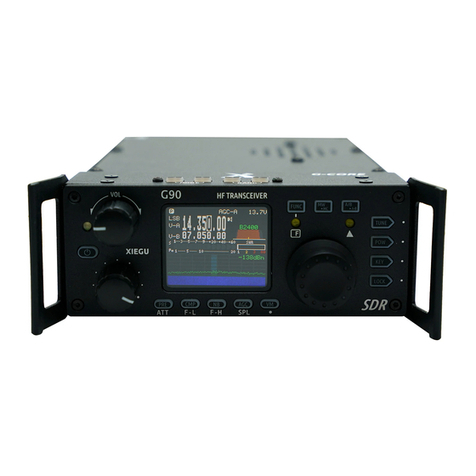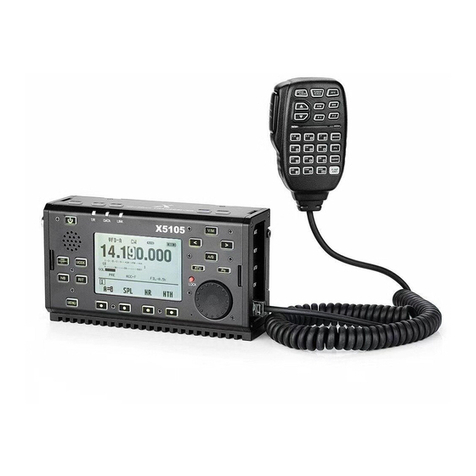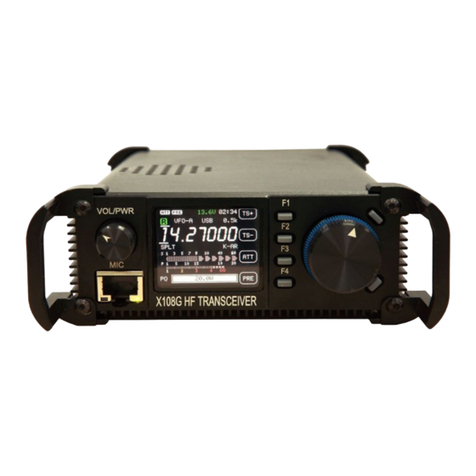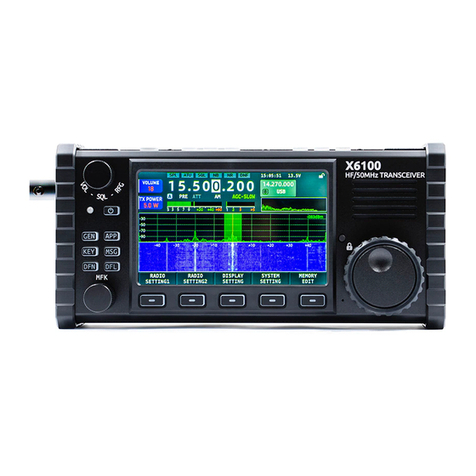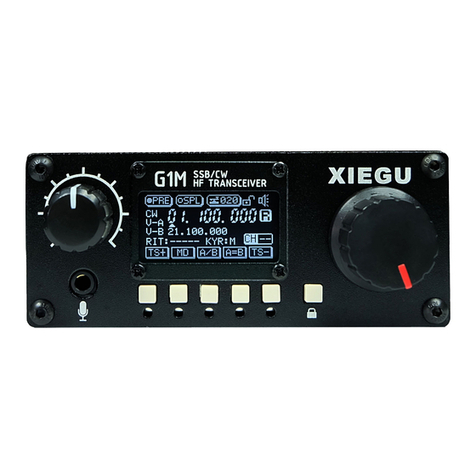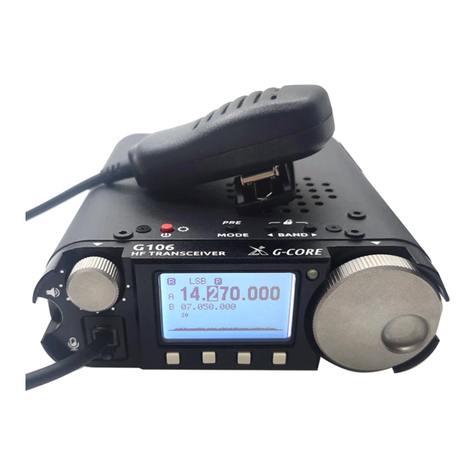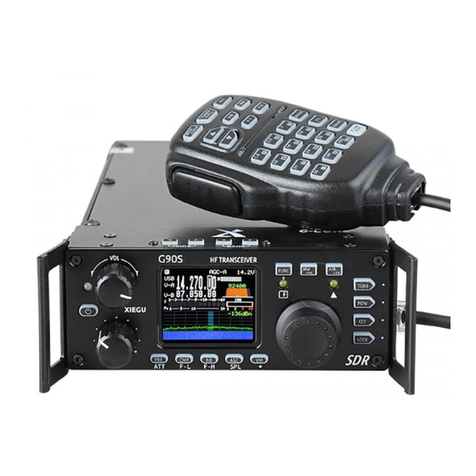
Basic Features
Panel Buons
Front Panel
Side Panels
Rear Panel
Connector Pin-Outs
MIC Buons
External Power Connecon
LCD Display
Power On/Off
Bands Selecon
Operang MODE Selecon
Volume Adjustment
Mul-funcon Adjustment Knob
Adjusng Transmit Power
Seng Operaon Frequency
Automac Antenna Tuner
Funcon Buons
VFO and Split (SPL) Operaon
CW Transmission
-------------------------------------------------------------01
--------------------------------------------------------------02
----------------------------------------------------------------04
-----------------------------------------------------------------05
-----------------------------------------------------------------06
------------------------------------------------------08
---------------------------------------------------------------10
-------------------------------------------11
----------------------------------------------------------------12
-------------------------------------------------------------12
----------------------------------------------------------13
--------------------------------------------14
-----------------------------------------------------15
------------------------------------16
---------------------------------------------19
------------------------------------------20
---------------------------------------------19
---------------------------------------------------------20
---------------------------------------22
---------------------------------------------------------23
SWR Scanner
Digital Bandwidth Filter
Line Input /Output Selecon
Channel Memories
Seng Boot Screen Callsign
System Menu
PC Data Comm. Connecons
System Parameter Sengs
Computer Control Instrucons
Band/Voltage Output for Ext. Amp
Specificaons
Packing Ltems List
G90 and XPA125B Connecon Diagram
CE-19 Expansion Card Interface
Copyright Statement
--------------------------------------------------------------24
------------------------------------------------25
-----------------------------------------26
------------------------------------------------------27
------------------------------------------28
--------------------------------------------------------------29
-----------------------------------------30
--------------------------------------------30
---------------------------------------31
---------------------------------31
-------------------------------------------------------------32
--------------------------------------------------------34
--------------------------- 35
--------------------------------------36
----------------------------------------------------37






